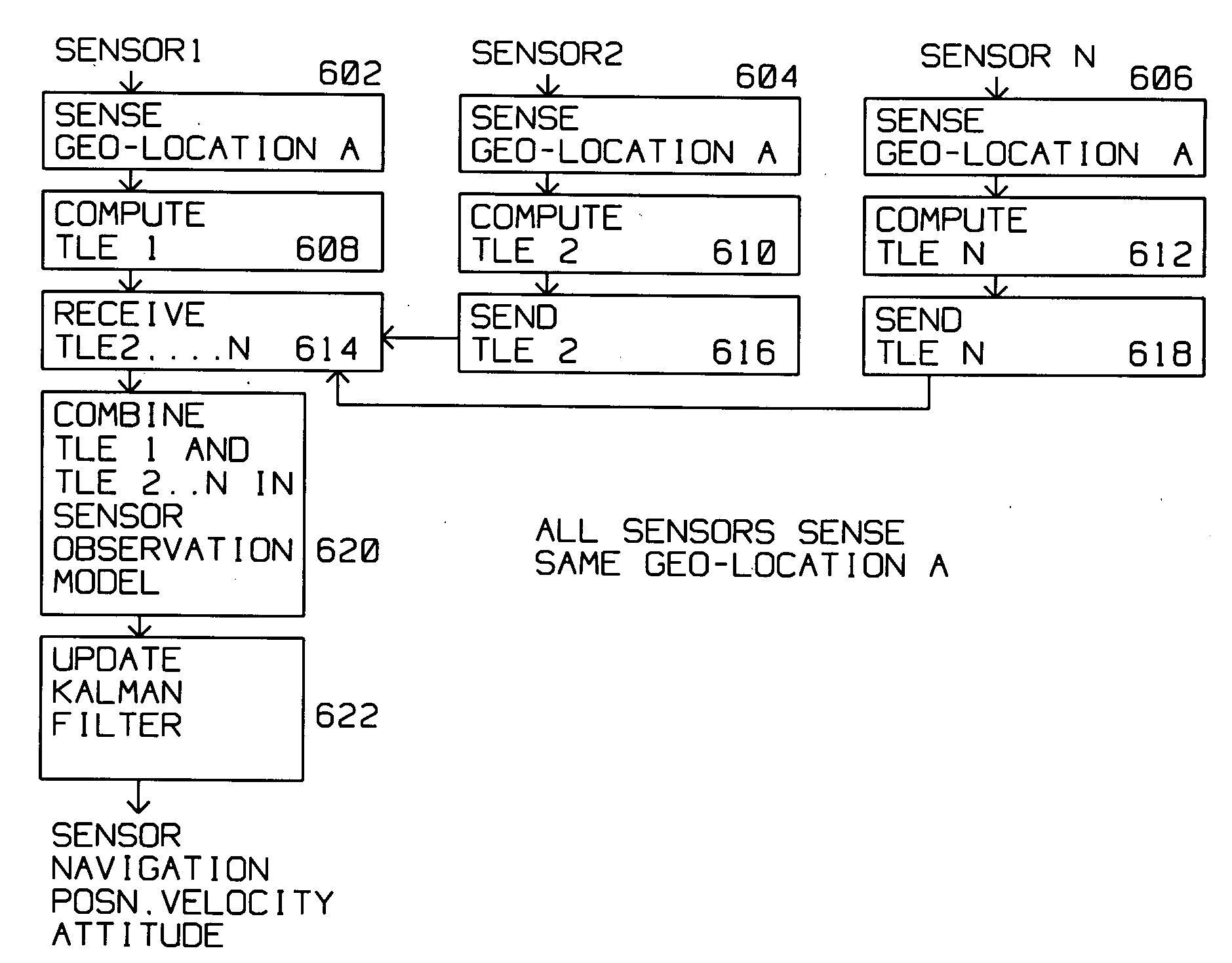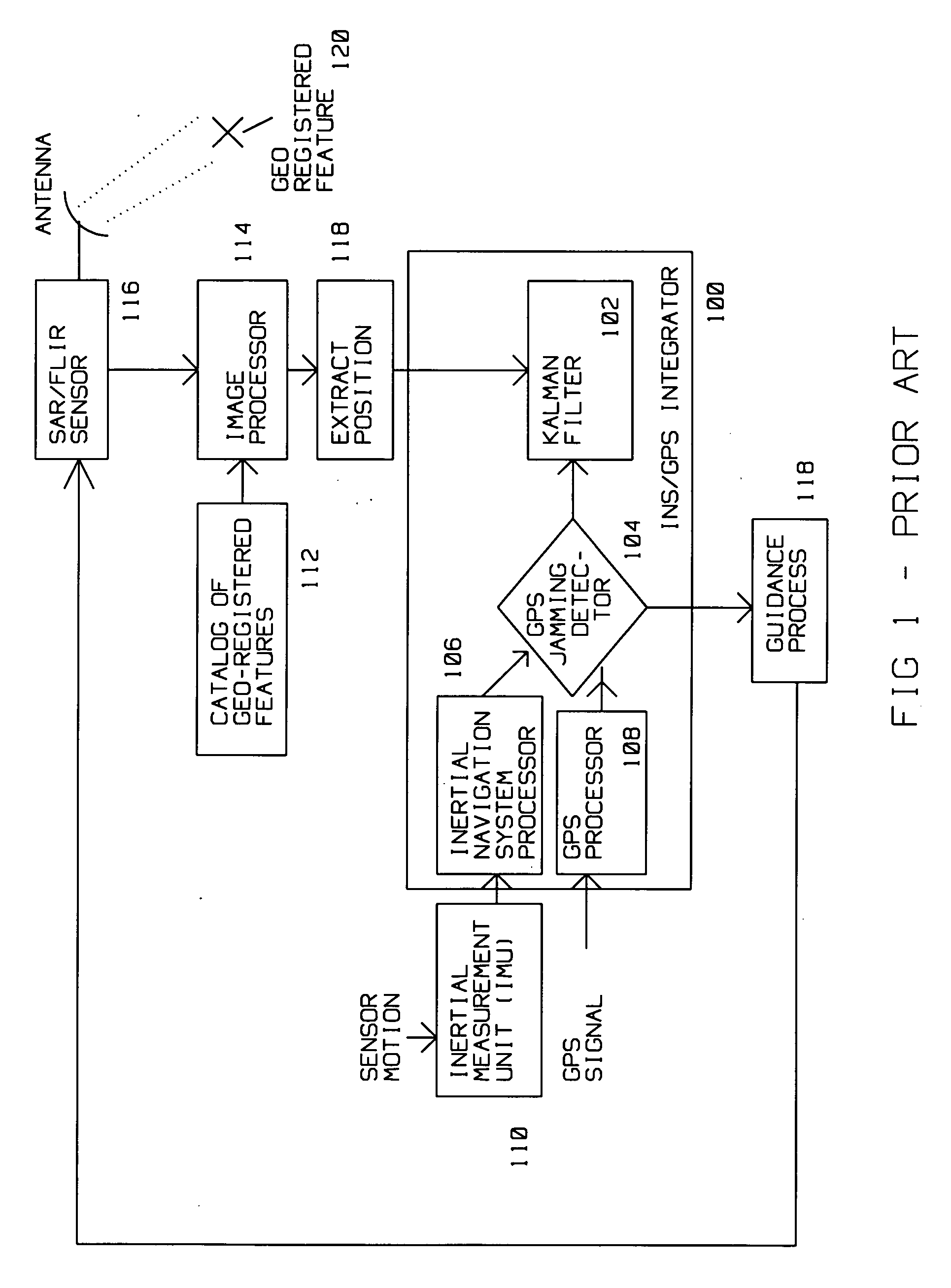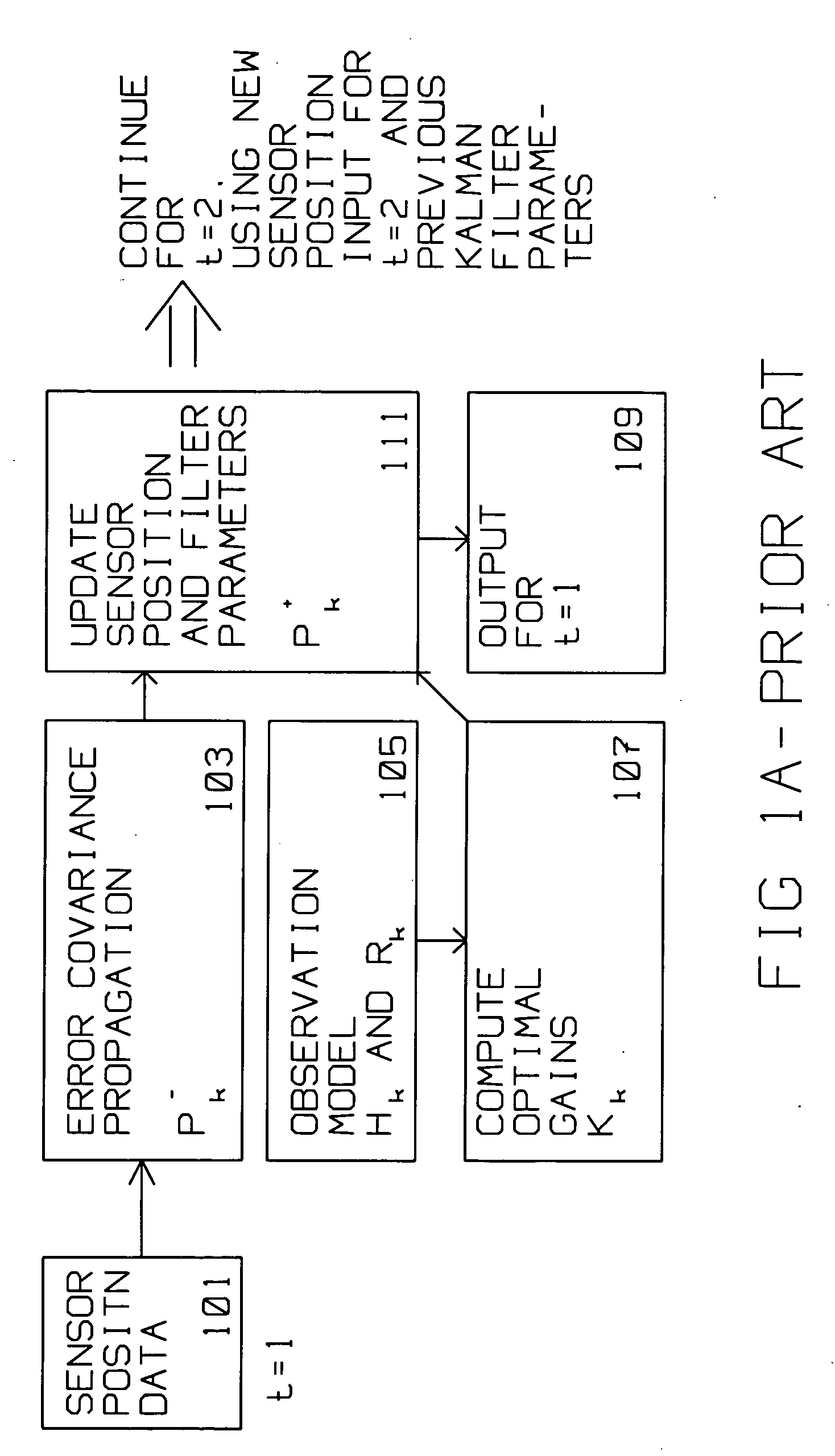Aided INS/GPS/SAR navigation with other platforms
a technology of sar and aided ins/gps, applied in direction finders, navigation instruments, instruments using radio waves, etc., can solve problems such as reducing sar utility, increasing parts count, and corrupting gps signals
- Summary
- Abstract
- Description
- Claims
- Application Information
AI Technical Summary
Benefits of technology
Problems solved by technology
Method used
Image
Examples
case ia embodiment
[0060] Platform 0 is updated from Platform 1 with two dimensional measurement noise matrix.
[0061] In this case Platform 1 has higher navigation accuracy than that of Platform 0. The navigation accuracy of Platform 0 is updated with independent observations (target measurements), separate and distinct from those obtained in Platform 1 via the data link system. The error state vector, the observation matrix and the measurement noise matrices of the Kalman filter for Platform 0 are: x->k=(δ rx,δ ry,δ rz,δ Vx,δ Vy,δ Vz,0,… ,0)T,Hk=(h00,h01,h02,h03,h04,h05,0,… ,0h10,h11,h12,h13,h14,h15,0,… ,0)andRk=(r0000,r11)
[0062] The derivation of r00 and r11 is shown in FIG. 5. In FIG. 5, the lengths OP0 (denoted as a0) is the down track error while OQ0 (denoted as b0) is the cross track error of the TLE obtained from platform 0. The lengths OP1 (denoted as a1) is the down track error while OQ1 (denoted as b1) is the cross track error of the TLE obtained from platform 1. The TLE fo...
case ib
[0070] We will choose the down-track and vertical-track of the TLE as two dimensional elliptic axes. Thus [0071] b1=cross-track [0072] c1=vertical-track
[0073] The general elliptic equation for two dimension is r2=b2c2c2cos2θ+b2sin2θrVR 1=b12c12c12cos2θ+b12sin2θwherecos θ=VH 0⟶VH 0·VH i⟶VH isin2θ=1-cos2θVH 0⟶=(0,Vy 0,Vz 0)VH i⟶=(0,Vy 1,Vz 1)
[0074] Note that we also can obtain rCR1 from the above equations. However, this rCR1 is the same as rCR1 that was derived in Case Ia.
[0075] Note that the rVR1 can also be derived from the vertical-track and cross-track of the TLE ellipsoid by using the above method.
[0076] The hij(i=0,1,2 j=0,1,3,4,5) are defined in Equation 2 which are derived from the TLE for platform 0.
Case Ic—Platform 0 is Updated from All Other Platforms i (i=1, 2, . . . n-1)
[0077] In one embodiment, as shown in FIG. 3, Sensor 0301 is connected to all other sensors, sensor 1303, sensor i 307 and sensor (n-1) 305 using bidirectional da...
case ii
[0079] Sensor i is updated from other sensors j (≠i) at the same time where j=0, 1, . . . , n-1 for a fixed i where I=0, 1, . . . , n-1. All sensors, including sensor 0, are sensing the same geo-location A, typically a conveniently discernable target.
[0080] This case is illustrated in FIG. 4. Here, sensor 0400 has a GPS receiver 402 for receiving navigation signals from a constellation of GPS satellites. GPS Jamming Detector 414 detects a jammed or unavailable GPS signal. If the GPS navigation signal is valid, the GPS location information is passed to Kalman filter 412, which in turn supplies position information to Update Guidance Position, Velocity and Attitude 416 within processor 420.
[0081] Conversely, if GPS Jamming Detector 414 determines that the GPS signal is unusable, that is, jammed or corrupted, an alternative source of navigation information is activated. Inertial Navigation System SAR, FLIR Platform motion 404 determines the location of a sensor (on a platform) and ge...
PUM
 Login to View More
Login to View More Abstract
Description
Claims
Application Information
 Login to View More
Login to View More - R&D
- Intellectual Property
- Life Sciences
- Materials
- Tech Scout
- Unparalleled Data Quality
- Higher Quality Content
- 60% Fewer Hallucinations
Browse by: Latest US Patents, China's latest patents, Technical Efficacy Thesaurus, Application Domain, Technology Topic, Popular Technical Reports.
© 2025 PatSnap. All rights reserved.Legal|Privacy policy|Modern Slavery Act Transparency Statement|Sitemap|About US| Contact US: help@patsnap.com



